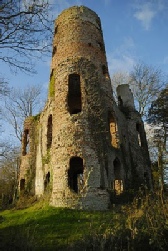



The Parish Church of St George the Martyr, Waterlooville

Linda Newell came on the 12th May to give us a very interesting talk on Smugglers Around the Harbour.
Linda started the talk off by reading a poem titled The Smugglers’ Song by Rudyard Kipling. Smuggling started in England in appox 1300, when Edward I placed a duty on exporting wool. Amongst other things that were smuggled were clay pipes and plates, bowls and jars made from clay were common, tobacco, tea, gin and brandy, china, jewellery especially pearls, soap, coffin nails and sealing wax.
Not only were women useful to the smugglers as signallers and carriers of messages from members of the gang to each other, but they actually brought goods in from the shore for them. The voluminous skirt was a particularly useful fashion, for the women wound yards of silk and lace round their bodies and reached home as a rule quite peacefully with their contraband.
The villages of Langstone and Emsworth were both notorious haunts of smugglers. At Langstone, the Mill was used both for signalling, (the sails could be easily positioned to form a pre-
On the Broyle Road in Chichester there is a stone which commemorates the hanging of William Jackson, one of several members of the gang to be hanged for their part in the deaths of Daniel Chater and William Galley. The smugglers stone was erected in 1749.
Brandy Hole Lane in Chichester comes from the brandy casks discovered in a cave when the Chichester to Midhurst branch of the London Brighton and South Coast railway line was built in 1881.
Racton Ruins is an 80 foot tall folly built in 1772 by the Earl of Halifax. It is now in disrepair, sat on top of a small hill near Stansted House, surrounded by trees and extremely spooky. The myths surrounding the use of the tower are that it was used by smugglers.
John Shakespeare (1531-
He was also involved in the dubious business of money lending. Records show John lost most of his money during the 1560’s, and he avoided going to church for fear of being arrested for unpaid debts. He also was accused of being involved in illegal wool smuggling and retired from public office in 1576.
Priscilla Barlow
Summer Edition 2011
St George’s Ladies Group

spooky Racton Ruins